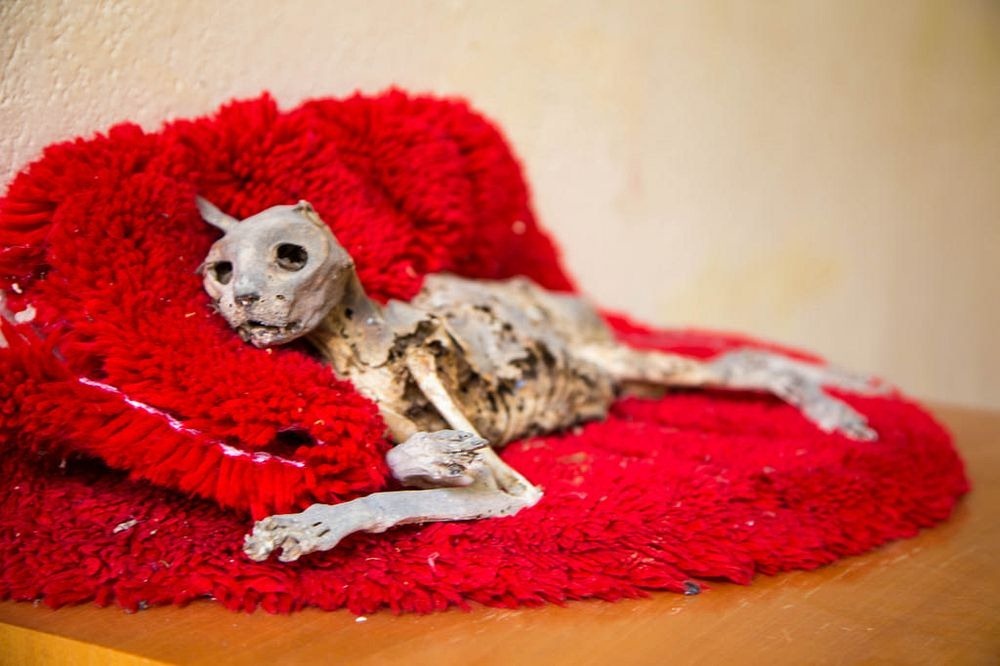About 25 miles south of Berlin lies the small town of Wunsdorf, home to about six thousand inhabitants. But less than thirty years ago it had a population of sixty thousand, of which fifty thousand were soldiers of the Red Army. They lived inside one of the biggest military bases in Europe and the biggest Soviet military camp outside the USSR. The former headquarters of Soviet forces in Germany was so large that it was known as “Little Moscow”, with daily trains going to the Soviet capital. Inside, there were schools, shops, hospitals and leisure facilities.
Photo credit: Kevin Hackert/Flickr
Wünsdorf became a Soviet military camp after the fall of Nazi Germany at the end of World War 2, but the town’s military history goes back by another seventy years or so. It was originally a shooting range of the Prussian army, before the first army barracks appeared. With the construction of railway line, the whole area began to gain strategic significance and by the time the First World War kicked off in 1914, the 60,000-acre complex had become Europe’s largest military base.
By 1935, Wünsdor became the headquarters of the Wehrmacht, the unified armed forces of Nazi Germany. Under Hitler’s leadership, Wünsdor became a powerful military stronghold. They built a modern underground communications center called Zeppelin, which had walls up to 3.2 meters thick, and several bombproof bunkers with 80-centimeter thick roofs, and disguised as rural homes.
After the Nazis left, the Soviets moved in and Wünsdor effectively became a shut-off Soviet city in the heart of Germany. Locals were booted out and all roads to Wünsdor was closed to traffic. To the natives, Wünsdor became Die Verbotene Stadt—the “Forbidden City”.
After the fall of the Berlin Wall in 1989, the reunification of Germany and the dissolution of the Soviet Union, the Russian soldiers were called back home. When they departed, they left behind a vast site littered with 98,300 rounds of ammunition, 47,000 pieces of ordnance, 29.3 tons of munitions and rubbish, including chemicals, waste oil, old paint, tires, batteries and asbestos. Shops were left full of electronics, radios, TVs and fridges. Families left in such a hurry they couldn’t take everything. Houses were full of domestic appliances. Even pets were left behind. Their skeletons now lie sprawled across the floor.
Today, the entire complex is rotting in neglect, occasionally visited by photographers and those who have a penchant for abandoned ruins.
Photo credit: Steffi Reichert/Flickr
Photo credit: Kevin Hackert/Flickr
Photo credit: Micha Blitz/Flickr
Photo credit: Steffi Reichert/Flickr
Photo credit: Micha Blitz/Flickr
Photo credit: Kevin Hackert/Flickr
Photo credit: Kevin Hackert/Flickr

Photo credit: Kevin Hackert/Flickr
Photo credit: Micha Blitz/Flickr
Photo credit: Kevin Hackert/Flickr
Photo credit: Kai 'Oswald' Seidler/Flickr
Photo credit: Kai 'Oswald' Seidler/Flickr
Photo credit: Kai 'Oswald' Seidler/Flickr
Photo credit: Paul Schulze/Flickr
Sources: The Guardian / Abandoned Berlin


























why aren't places like this rehabbed into affordable housing? this place is probably past any hope of that, i suppose, but there are facilities like this here that sit unused. i guess it's just not worth the money to try and help people.
ReplyDelete@paul fredine - The area doesn't have enough jobs or infrastructure for a large influx of people. It would be better to give the homeless healthcare, mental care, and job training, and have them try to find work locally rather than gather many of them into one place.
Delete@ Unknown - Not if the pets were locked inside. They clearly died inside the homes so I don't know what you're disputing.
What are you writing about? So you want to say if even people left the pets they sat and waited for death? Are you ok.animals in any way would look for people and ask food. And you made photos of dead animals on quite new red carpet. Horrible to write like this. I lived there. And i know german people lived and live not far from this soviet town. And in any way they could animals find the way to people.
ReplyDeleteI'm a photographer and I'd really like to visit this place. Does anyone know how to get in contact with the owner or someone who allows tours?
ReplyDelete